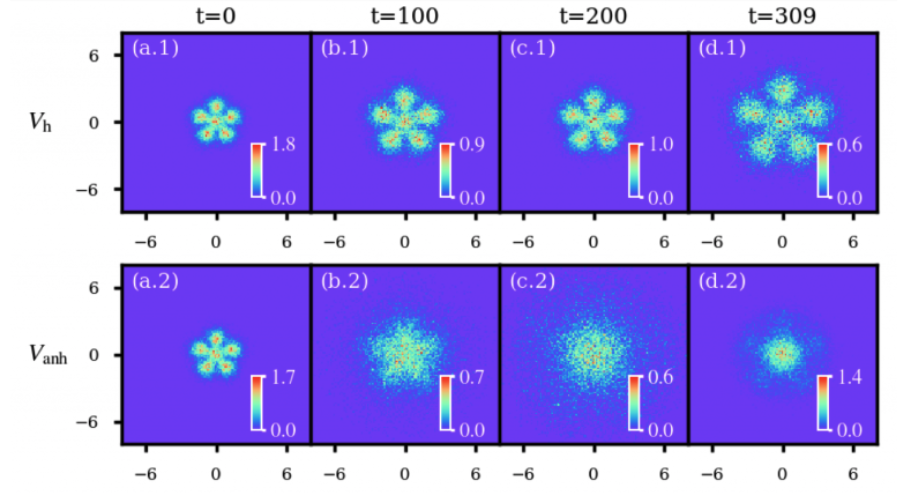Research Highlights
How do Pauli crystals melt?

Pauli crystals are ordered geometric structures that appear when noninteracting fermionic gases - such as 8Li - are cooled to extremely low temperatures and confined by optical traps. Under these conditions, the quantum nature of the atoms in the gas dominate, and the crystal structure emerges because each atom in the gas repels its neighbors due to the Pauli exclusion principle. Pauli crystals are notoriously difficult to realize because of the very high degree of control needed in the experiments, and were definitively observed for the first time only in 2020 (see the original Physical Review Letter article here. When the conditions are not perfect, the Pauli crystal gets deformed - a phenomenon called melting. Pauli crystal melting has been observed in experiments, too, but the mechanism that leads to it remained unclear.
We have addressed this question by studying the melting dynamics of a few-particle fermionic system as a function of periodic driving and experimental imperfections in the optical trap (anisotropy and anharmonicity). To do so, we employed a combination of numerical simulations with the software MCTDH-X and Floquet theory. Surprisingly, we revealed that the melting of Pauli crystals is not simply a direct consequence of heating up the system, but is instead more related to the trap geometry, and to the population and behaviour of the time-periodic quantum states (Floquet states). We showed that the melting is absent in traps without imperfections and triggered only by a sufficiently large shaking amplitude in traps with imperfections.
Our study sheds light into the geometric and dynamical mechanisms that lead to melting and should help devise experimental protocols that prolong the lifetime of Pauli crystals. Reducing geometric distortions of the trap will substantially increase the stability and duration of the Pauli crystal phase. Our results also highlight that many-body correlations offer a very rich phenomenology to explore and that dynamical excitations play a crucial role for the stability of crystalline phases of matter of quantum gases.